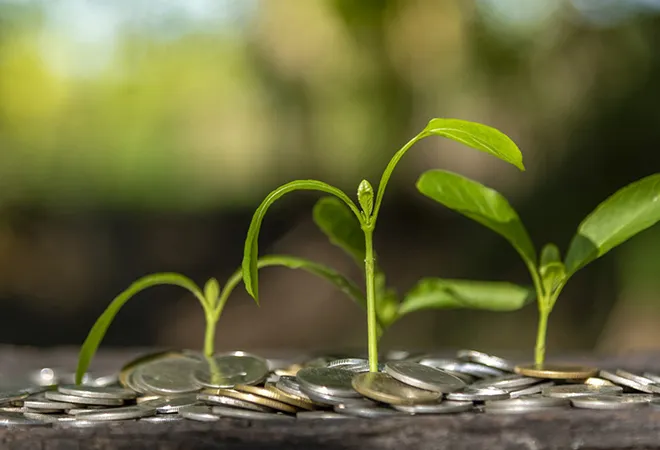
Released on 4 April 2022, the IPCC Working Group III (WGIII) Sixth Assessment Report (AR6) on Mitigation of Climate Change runs into more than 2,900 pages. This is the sixth iteration of the IPCC process. The report is divided into 17 chapters, each on average is of about 150 pages. The full report is yet to be approved and carries the caveat “Do Not Cite, Quote or Distribute.” It assesses literature on the scientific, technological, environmental, economic and social aspects of mitigation of climate change.
The Working Group I (WGI) AR6 report looked at the physical science of the climate system and was published in August 2021. It reported that the climate was changing more rapidly than originally anticipated by climate scientists. The WG II AR6 report was released in February 2022. It reported that the consequences of the disruptions to the global climate system are also worse than expected, and evaluated how much humans and the natural world could adapt to them. The bottom line is that emissions must peak by 2025 for the world to have a chance of meeting the Paris Agreement goal to limit warming to 1.5°C.
The WGIII report lays out the actions that the world can take to stop global temperatures rising beyond certain levels by the end of the century. To limit warming to 1.5°C, the global use of coal, oil, and gas in 2050 must decline by about 95 percent, 60 percent and 45 percent respectively, relative to 2019. The IPCC report argues that “on technological and cost considerations alone, mitigation of emissions to limit warming to 1.5°C is feasible.” The report says that to avoid more than 1.5°C of warming, global emissions must peak before 2025 and then fall by 43 percent before 2030, compared with 2019 levels. Sector-specific mitigation approaches (chapters 6 through 11) emphasise the potential of mitigation via improvements in energy- and materials-efficient manufacturing, new product design, energy-efficient buildings, transport infrastructure design shifts, and compact urban forms.
All of this, however, comes at a substantial cost. The report estimates that taking the actions needed to keep temperatures below 2°C could reduce global GDP by 1.3 percent to 2.7 percent by 2050, but not doing so has its own costs in the form of lost lives, livelihoods, destruction caused by extreme weather events and lost productivity, amongst others. Limiting global warming to 2⁰C or below will leave a substantial amount of fossil fuels in the lithosphere and could result in considerable fossil fuel infrastructure being stranded. The combined global discounted value of the unburnt fossil fuels and stranded fossil fuel infrastructure has been projected to be between one and four trillion dollars from 2015 to 2050. It will be higher still if global warming is limited to approximately 1.5⁰C.
The report estimates that taking the actions needed to keep temperatures below 2°C could reduce global GDP by 1.3 percent to 2.7 percent by 2050, but not doing so has its own costs in the form of lost lives, livelihoods, destruction caused by extreme weather events and lost productivity, amongst others.
The choice is between economic and socio-political disruptions in the near term that are not necessarily existential, and existential disruptions for vast sections of the global population in the medium to long term, particularly for the poorest parts of the world and low-lying regions that are vulnerable to rising seas and destructive storm surges. Near-term disruptions may include change of location of GHG-intensive industries and reorganisation of value chains. Regions with abundant low GHG energy and feedstock have the potential to become exporters of hydrogen-based chemicals and materials processed using low-carbon electricity and hydrogen. Such reallocation will have global distributional effects on employment and economic structure.
Mitigation costs are borne by countries taking action, while the benefits of reduced climate change are not limited to them, in economic terms “non-excludable”. The same applies for cost of inaction or medium-to long-term disruptions, those who free-ride are not necessarily the ones adversely impacted by climate change. The report identifies the obstacles to mitigation, including fossil fuel phase-out are politics and power relationships and status-quo interests. Countries with very low population density and high fossil fuel reserves and infrastructure will have little interest in mitigation. For example, last year the United States pledged to reduce emissions at least by half by 2030, but emissions actually surged by about 7 percent in 2021. This can be counterbalanced by countries with large populations and low or no known oil reserves, high alkali metal deposits and/or hydrogen infrastructure.
The WGIII AR6 report talks of other mitigation options that are likely to be less contested, demand side mitigation, for example. “The indicative potential of demand-side strategies across all sectors to reduce emission is 40-70 percent by 2050 (high confidence).” This is in Chapter 5 of the report that is radically different from the others. It is titled “Demand, services and social aspects of mitigation,” perhaps a first for the IPCC Assessment Reports. Within the chapter, section 3 on mapping the opportunity space is fundamental. Samples this, “To enhance well-being, people demand services and not primary energy and physical resources per se. Focusing on demand for services and the different social and political roles people play broadens the participation in climate action.” It argues that demand-side mitigation and new ways of providing services can help avoid, shift, and improve final service demand. “The greatest Avoid potential comes from reducing long-haul aviation and providing short-distance low-carbon urban infrastructures. The greatest Shift potential would come from switching to plant-based diets. The greatest Improve potential comes from within the building sector, and in particular increased use of energy efficient end-use technologies and passive housing.”
Authors of chapter 5 seem to believe that there is now high evidence and high agreement that the COVID-19 pandemic has increased the political feasibility of large-scale government actions to support the services for provision of public goods, including climate change policies. This is possibly misplaced despite both crises being global in scale and requiring holistic societal responses. COVID-19 outbreak resulted in rapid of loss of lives and the restrictions that followed reinforced sufficiency and emphasised solidarity, but impacts of climate change are unlikely to play out as dramatically and therefore to expect to build economies around care, livelihood protection, collective action, and basic service provisioning is unlikely to find favour with governments and populations.
While focusing on the demand for services does broaden the climate solution space beyond technological switches confined to the supply side, it is possibly restricted to populations that have attained a certain level of well-being.
While focusing on the demand for services does broaden the climate solution space beyond technological switches confined to the supply side, it is possibly restricted to populations that have attained a certain level of well-being. For the poor, improving well-being is not only related to nutrition, shelter, and mobility that will demand higher energy and material inputs in absolute terms, but it is also about aspirations and possessions. Even for the better off sections of populations, making shifts in consumption is hard to pursue since consumption is a habit-driven and social practice rather than simply a set of individual decisions. There is no escape from the
The views expressed above belong to the author(s). ORF research and analyses now available on Telegram! Click here to access our curated content — blogs, longforms and interviews.




 PREV
PREV


